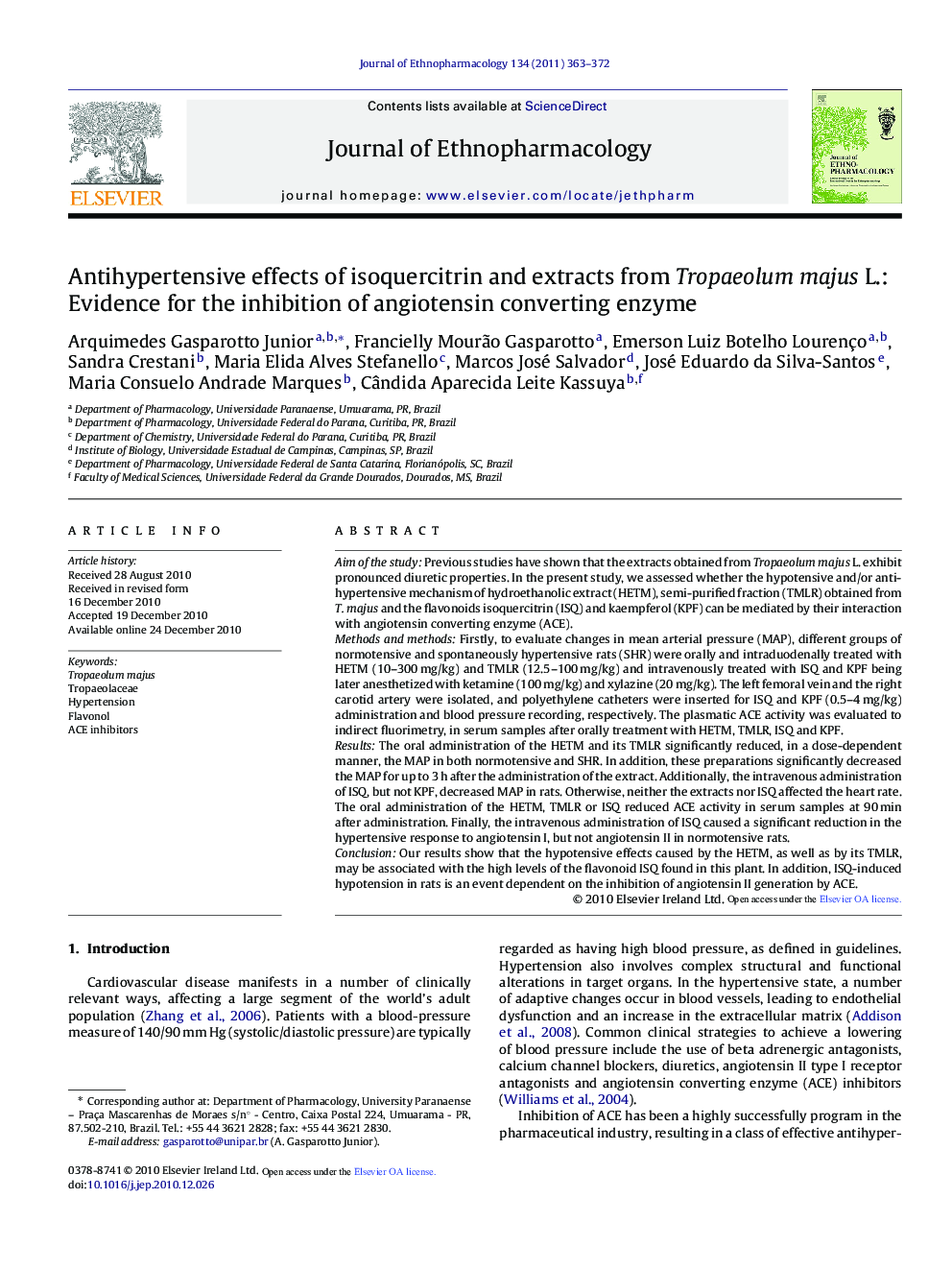| Article ID | Journal | Published Year | Pages | File Type |
|---|---|---|---|---|
| 5839535 | Journal of Ethnopharmacology | 2011 | 10 Pages |
Aim of the studyPrevious studies have shown that the extracts obtained from Tropaeolum majus L. exhibit pronounced diuretic properties. In the present study, we assessed whether the hypotensive and/or antihypertensive mechanism of hydroethanolic extract (HETM), semi-purified fraction (TMLR) obtained from T. majus and the flavonoids isoquercitrin (ISQ) and kaempferol (KPF) can be mediated by their interaction with angiotensin converting enzyme (ACE).Methods and methodsFirstly, to evaluate changes in mean arterial pressure (MAP), different groups of normotensive and spontaneously hypertensive rats (SHR) were orally and intraduodenally treated with HETM (10-300Â mg/kg) and TMLR (12.5-100Â mg/kg) and intravenously treated with ISQ and KPF being later anesthetized with ketamine (100Â mg/kg) and xylazine (20Â mg/kg). The left femoral vein and the right carotid artery were isolated, and polyethylene catheters were inserted for ISQ and KPF (0.5-4Â mg/kg) administration and blood pressure recording, respectively. The plasmatic ACE activity was evaluated to indirect fluorimetry, in serum samples after orally treatment with HETM, TMLR, ISQ and KPF.ResultsThe oral administration of the HETM and its TMLR significantly reduced, in a dose-dependent manner, the MAP in both normotensive and SHR. In addition, these preparations significantly decreased the MAP for up to 3Â h after the administration of the extract. Additionally, the intravenous administration of ISQ, but not KPF, decreased MAP in rats. Otherwise, neither the extracts nor ISQ affected the heart rate. The oral administration of the HETM, TMLR or ISQ reduced ACE activity in serum samples at 90Â min after administration. Finally, the intravenous administration of ISQ caused a significant reduction in the hypertensive response to angiotensin I, but not angiotensin II in normotensive rats.ConclusionOur results show that the hypotensive effects caused by the HETM, as well as by its TMLR, may be associated with the high levels of the flavonoid ISQ found in this plant. In addition, ISQ-induced hypotension in rats is an event dependent on the inhibition of angiotensin II generation by ACE.
Graphical abstractThe effects of extract, purified fraction and isoquercitrin, an active flavonol of T. majus were evaluated on MAP in rats. Our results revealed that the isoquercitrin-induced hypotension is an event dependent on the inhibition of angiotensin II generation by ACE.Download high-res image (216KB)Download full-size image
